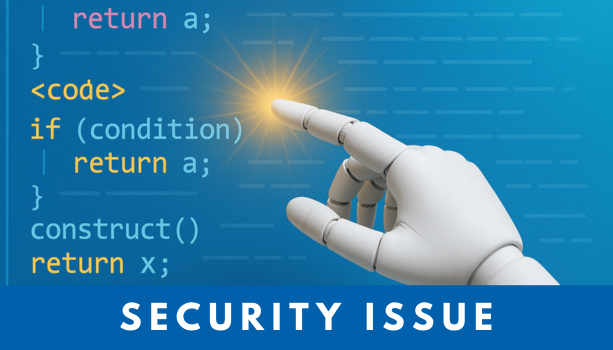Is AI Coding Safe to Use?
In recent years, AI-powered coding tools like GitHub Copilot, ChatGPT Code Interpreter, and Amazon CodeWhisperer have significantly transformed the software development landscape. These tools go beyond simple autocomplete functions. For example, AI coding tools generate complex logic, fix bugs, and even assist developers in learning new programming languages. With such powerful capabilities, they are increasingly being referred to as a second brain for developers.
However, behind the rapid advancement of these technologies lies a fundamental security concern: can we truly trust the code produced by AI tools? As AI-generated code becomes more widespread, so too do the warnings that these tools may introduce new vulnerabilities into our systems.
Why Are AI Coding Tools So Popular?
The explosive adoption of AI coding tools is no mystery as they offer tangible value to developers in multiple ways.
- Boosted Productivity
AI tools handle repetitive and mundane tasks such as writing boilerplate code or generating unit tests. This allows developers to focus on more complex and creative challenges, significantly accelerating overall development speed. - Faster Learning
When learning a new programming language, framework, or library, AI coding assistants serve as excellent teaching aids. Developers can instantly request implementation examples, receive detailed explanations of complex code blocks, and quickly understand best practices. - Enhanced Collaboration
With AI, developers can quickly prototype ideas and share them with team members to move discussions forward. AI tools can also help maintain consistent coding conventions across teams by suggesting code aligned with established patterns and standards.

Are AI Coding Tools Safe?
Despite these clear advantages, AI coding tools pose serious cybersecurity risks that must not be ignored.
- Insertion of Code Vulnerabilities
AI models are trained on massive codebases available on the internet. Unfortunately, these datasets may include outdated, vulnerable code or insecure libraries such as those prone to SQL injection or cross-site scripting (XSS) attacks. If developers accept AI-generated suggestions without scrutiny, they could unintentionally introduce security holes into their systems. - Prompt Injection Attacks
This attack method targets the AI model itself. A malicious user could craft deceptive prompts that trick the AI into leaking sensitive data, such as API keys or environment variables, or even recommend code with hidden backdoors under the guise of normal functionality. - Risk of Data Leakage
When developers use AI tools, their input may be transmitted to external servers. If this input includes proprietary business logic, internal system details, or customer data, it could result in a major data breach. Worse yet, if this data is used to retrain the model, it could become accessible to other users. - Vulnerabilities in the Tools Themselves
AI coding tools are still software, subject to the same security flaws as any other application. IDE plugins and web interfaces may contain exploitable vulnerabilities that hackers can use to compromise a developer’s system or gain unauthorized access.
In summary, it’s difficult to declare AI coding as completely secure at this stage.

How to Use AI Coding Tools Securely
So, should we avoid using AI coding tools altogether? Not necessarily. The key lies in understanding the risks and implementing effective mitigation strategies.
- Use Isolated Environments
When testing new or untrusted AI tools, use sandboxed or virtual environments separated from sensitive systems and data. - Follow OWASP Guidelines
AI is not a silver bullet. Developers must still be familiar with security standards like the OWASP Top 10 and proactively validate AI-generated code against these benchmarks. You can even ask AI to help improve code security by prompting it to add safeguards against SQL injection or other threats. - Mandatory Code Review
AI-generated code should undergo rigorous code review, even more so than code written by colleagues. During the review process, focus on verifying the logic and identifying any hidden security issues. The principle of “trust, but verify” is more relevant than ever. - Monitor Network Activity
Keep an eye on the data transmitted between AI tools and external servers. Consider implementing Data Loss Prevention (DLP) solutions to detect and block the leakage of sensitive information. - Employee Training
This is the most critical step. Developers must be educated on the security risks of AI-assisted coding, especially regarding prompt injection and data exposure. Organizations should establish clear guidelines prohibiting the entry of API keys, passwords, or personal customer information into AI prompts.
AI coding tools are a powerful double-edged sword that can dramatically boost developer productivity. While we embrace the innovation they bring, we must not overlook the security risks that accompany them.
What matters most is not blind trust in AI, but a commitment to using these tools safely and responsibly. With strong internal policies, proper training, and a rigorous review process, AI can become not just a helpful assistant—but a secure and trusted development partner.
Click here to subscribe our Newsletter
Click here for inquiries regarding the partner system of Penta Security
Check out Penta Security’s product lines:
Web Application Firewall: WAPPLES
Database Encryption: D.AMO
Check out the product lines of Cloudbric by Penta Security:
Cloud-based Fully Managed WAAP: Cloudbric WAF+
Agent based Zero Trust Network Access Solution: Cloudbric PAS
Agentless Zero Trust Network Access Solution: Cloudbric RAS
Click here for inquiries regarding the partner system of Cloudbric
